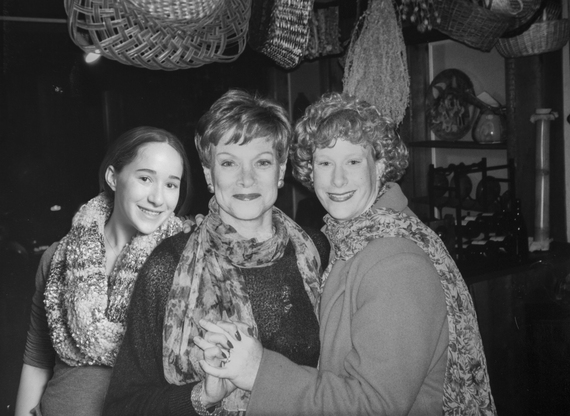Photos in frames. Pictures on your phone. Images are essential tools for remembering loved ones. Want fresh ideas for using snapshots? Here are five opportunities for using photos to remember the family and friends you never want to forget:
Fabricate history. Do you remember the video of Natalie Cole singing "Unforgettable" with her father, Nat King Cole? Of course they were never in the studio together, but technology made it possible to blend their images and voices. If you're technologically inclined you could do something similar with family photos. Using Photoshop, help children see for themselves the physical traits they've inherited from family members. Start with a good facial-depicting photo from contrasting generations, one younger and one elder. Then edit the images together so it appears they were taken at the same time. With the resulting product, the newest generation will observe something extraordinary -- they actually do have "Grandma's smile" and "Uncle Willie's" eyes! This is the photo I did for my family. My daughter never met my mother. My mom died many years before she was born. In this photo, I took two images -- one of my mother and me and a separate picture of Lexi -- to create one priceless and improbable image of all of us.
A different kind of scrapbook. Nobody has done more to stretch my understanding and appreciation of scrapbooks than Jessica Helfand, senior critic in graphic design at the Yale University School of Art and lecturer at Yale College. In her book, Scrapbooks: An American History, Helfand examines more than two hundred scrapbooks and argues they represent an essential and authoritative form of "visual autobiography." And while the photos she analyzed were used to create personal narratives, Helfand opened my eyes to considering the memory-preserving opportunities of making biographical scrapbooks -- that is, a scrapbook about another person. To create a biographical scrapbook, start by gathering snapshots of your loved one. Once you've collected the pictures, locate a few pieces of memorabilia that bring back positive memories -- letters and ticket stubs are great for this purpose. Then, find images that put all those objects into their historical context. By going out of your way to include these additional flourishes, you're able to root your loved one in history, making his or her life and legacy more tangible. Pictures of significant moments (presidential elections), public figures (actors and athletes), and common household objects (popular appliances used during their lifetime) are examples of terrific scene setters.
Create a Memory Magnet. A CBS News poll taken not too long ago identified just how much Americans love refrigerator magnets: 87 percent of respondents adorn their fridges with magnets that display everything from red and yellow alphabet letters to favorite vacation destinations and beer. If you'd like to keep a loved one in the center of your everyday life, you can easily create Memory Magnets using small family photos, epoxy stickers, and magnetic sheets. (The latter two are widely available online and in craft stores.) First, affix the epoxy stickers (sticky-side down) to the top of your picture, giving it a glasslike finish. Next, cut a piece of magnetic strip to the size and shape of your sticker and place it on the back. Done! In less than five minutes, you've made a Memory Magnet you can appreciate every day.
Reconsider your reflection. Look at yourself in a mirror. What grabs your attention first? Make-up icon Bobbi Brown hopes you see more than any perceived flaw or imperfection. In the book About Face: Women Write About What They See When They Look in the Mirror, Brown states: "A mirror can and should be a tool that empowers you." To Brown, this means embracing your reflection and applying cosmetics to enhance "what is naturally unique, and therefore beautiful, in every woman." I adore this notion. I'm also convinced empowerment can stem from using a mirror to build a deeper connection to the past. To draw strength from family, surround a mirror with photographs of your relatives and ancestors -- and then compare their features against your own. Notice the physical traits you have in common -- the shape of your eyes, the curve or angle of your nose, the color of your skin. You can decorate a mirror by inserting photos around the perimeter or permanently affixing photocopies with specialty glue and sealer. Either way, you'll be adding your reflection to a personal and stirring mosaic every time you look in its direction.
Make a game of it. Given how much we can do with technology these days, it would be a shame to not harness its benefits for children. Personalize a deck of cards with photographs of living family members and those you've lost. By integrating all your loved ones, children are seamlessly taught to value every relationship in their lives. The same sense of recognition can come from customizing a board book for a toddler or designing your own memory game. And, if you work with the eco-friendly website www.paperculture.com to create these projects or others, the company will plant a tree in recognition of every purchase -- giving customers the opportunity to dedicate that tree to whomever they wish.
I'd love to hear your ideas for using photos in non-traditional ways. Please share in the comments below.
